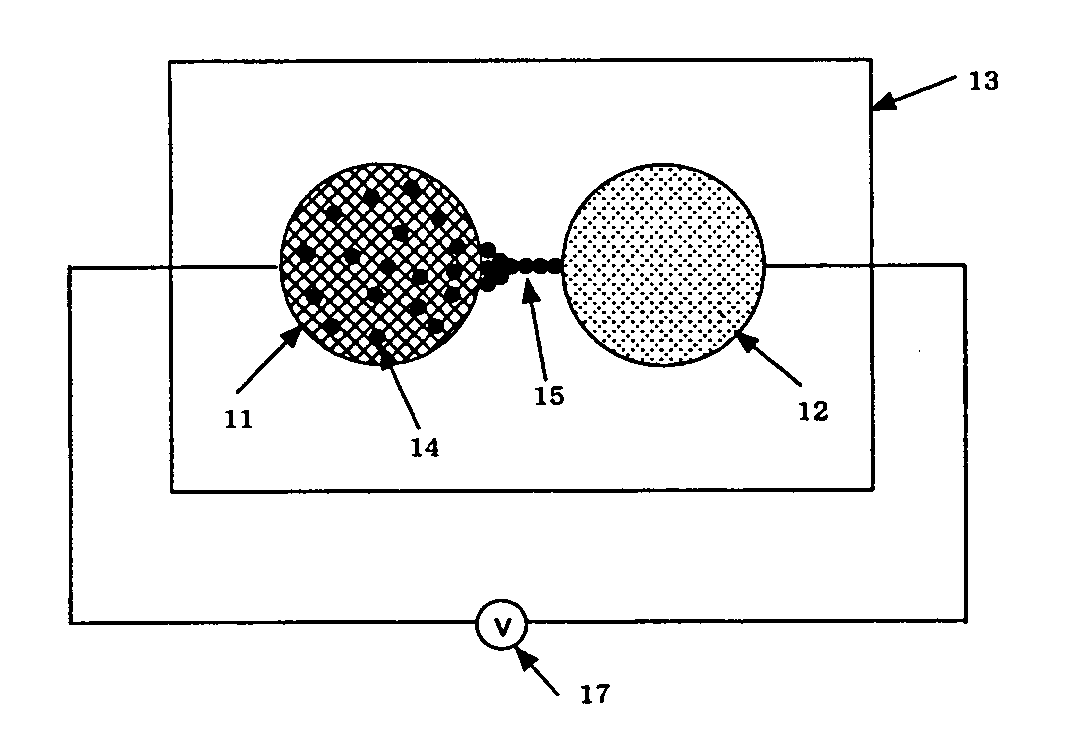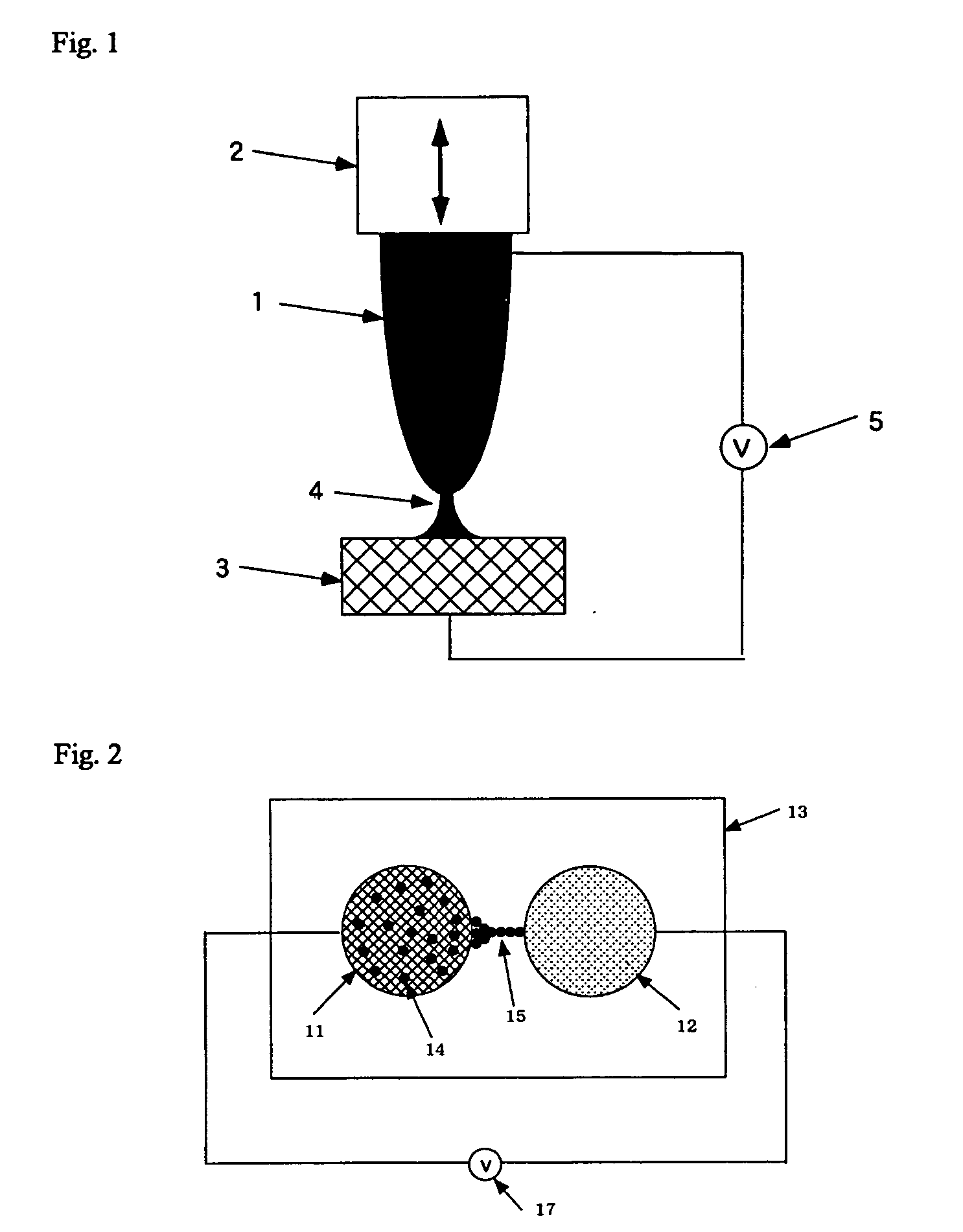Electronic device having controllable conductance
a technology of electronic devices and conductance, which is applied in the direction of digital storage, semiconductor/solid-state device details, instruments, etc., can solve the problems of difficult to manufacture an electronic element with such a function in practice, unsuitable inclusion method in high-density integrated circuits, and difficult to incorporate such electric elements into circuits to make the electrode mov
- Summary
- Abstract
- Description
- Claims
- Application Information
AI Technical Summary
Problems solved by technology
Method used
Image
Examples
example 2
[0043] FIG. 4 shows the case where, using an identical electronic element to that of Example 1, a bridge is disconnected. Herein, the polarity of the voltage applied was reversed from that used when the bridge was constructed. The resistance of the bridge increases slowly up to the vicinity of V=0.about.0.20V. This is because the silver atoms forming the bridge gradually move and return to the Ag.sub.2S electrode, so the bridge gradually becomes thinner. A rapid increase in resistance is observed in the vicinity of V=0.20V. This rapid increase of resistance is due to the disconnection of the bridge, so electrons do not pass through the bridge and flow only due to the tunnel effect.
[0044] In other words, by changing the polarity of the voltage, the silver projection can be lengthened and a bridge can be formed, or conversely, a bridge which has already been formed can be thinned and disconnected. When the bridge is formed, due to the effect of the voltage applied between the electrod...
example 3
[0045] Next, FIG. 5 shows the construction of a bridge comprising a fine wire or point contact producing a quantized conductance, using the electronic element of Example 1. In Example 1, the bridge is formed rapidly, so a fine wire or point contact producing a quantized conductance cannot be stably constructed. Hence, in this example, the voltage applied is reduced as far as possible to form a bridge while the silver projection is grown very slowly.
[0046] When a relatively small voltage of V=-2.5 mV was applied between the electrodes, a bridge was formed between the electrodes after several minutes-several tens of minutes. FIG. 5 shows the construction of this bridge. As the origin of time on the horizontal axis in FIG. 5, any arbitrary time immediately prior to formation of the bridge was taken as 0. The bridge is formed when the time is in the vicinity of 5 seconds, and the inter-electrode resistance slowly decreases with the elapsed time. At this time, as shown by the arrow marke...
example 4
[0048] In this example, using the electronic element with bridge of Example 3, instead of applying the voltage V=-25 mV, a relatively small voltage V=+5 mV of reverse polarity was applied between the electrodes where the bridge was formed, and after several minutes-several tens of minutes, the bridge had disconnected. FIG. 6 shows this event. As the origin of time on the horizontal axis in FIG. 6, any arbitrary time immediately prior to applying the voltage was taken as 0. Conversely to Example 3, the inter-electrode resistance gradually increases with the elapsed time. This increase of resistance is due to the fact that the bridge gradually becomes thinner with time. As shown by the arrow marked * in FIG. 6, the resistance increases in a stepwise fashion just before the bridge disconnects, which shows that the bridge comprises a fine wire or point contact producing a quantized conductance.
PUM
 Login to View More
Login to View More Abstract
Description
Claims
Application Information
 Login to View More
Login to View More - R&D
- Intellectual Property
- Life Sciences
- Materials
- Tech Scout
- Unparalleled Data Quality
- Higher Quality Content
- 60% Fewer Hallucinations
Browse by: Latest US Patents, China's latest patents, Technical Efficacy Thesaurus, Application Domain, Technology Topic, Popular Technical Reports.
© 2025 PatSnap. All rights reserved.Legal|Privacy policy|Modern Slavery Act Transparency Statement|Sitemap|About US| Contact US: help@patsnap.com



